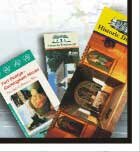
| Home | Search | Sitemap | Help | Contact | Sponsors |
|
|

|

|

|

|
| Home >> Article Database >> The Barbed Wire Solution |
|
The Barbed Wire Solution: Ukrainians and Canada's First Internment Operations 1914 - 1920
Ukrainian Canadian Research and Documentation Centre's travelling exhibiton - The Barbed Wire Solution: Ukrainians and Canada's First Internment Operations 1914 - 1920. In recognition of the 80th anniversary of the First Internment Operations in Canada. During World War I and after, between 1914 - 1920, the Canadian Goverment used the War Measures Act for the first time to intern over 8,000 men, women and children, the majority of whom were Ukrainians. This act also declared over 80,000 persons to be "enemy aliens," forcing them to register with authorities, carry identification documents, report to police on a regular basis and refrain from travel outside the country. After this episode, Canada used the War Measures Act twice again. During World War II it interned thousands of Japanese, German, Italian and other Canadians. In 1970 citizens of Quebec were also arrested and jailed. In the late 1800s as the frontier moved farther west, Ukrainians responded to Canada's promise of free land with many eager immigrants becoming pioneers of the prairies. As the type of immigrant changed from farming to that of the migratory worker, the depression of 1913 hit hard. Job scarcity encouraged an anti-foreigner and "hire Canadian" sentiment. When war broke out, Canada, as part of the British Empire, fought alongside Britain against Austria and Germany. Those Ukrainians from Austria who had not yet become British subjects, were in a vulnerable position. In August 1914, Canada passed its first War Measures Act restricting movement, forcing registration and thereby cutting important civil liberties. Failure to comply made these persons liable to arrest and incarceration in one of the 24 internment camps set up across Canada. Most of the prisoners were civilians, who without military training found it difficult to deal with incarceration. Conditions varied in different camps but generally they were harsh with overcrowding, isolation, fatigue and desperation being the norm. Cold winters, long working hours of hard manual labour, inadequate shelter, clothing and food were hard both on the prisoners and their guards. By 1916 Canada again experienced a shortage of labour, and the Federal Government decided that the men in internment camps could be used to do the work. Many of the internees were paroled to individuals and corporations.
As the war neared to an end, the Wartime Elections Act disenfranchised most naturalized Ukrainian Canadians until 1919 when the act lapsed. The internment camps at Vernon and Kapuskasing were still operating sixteen months after the declaration of peace. They were not closed until 1920. Thousands of people were imprisoned in all areas of Canada forging a permanent part of the history of these municipalities and their provinces. For decades, this regrettable part of Canadian history, buried in obscure records had received only a cursory mention in history books and courses.
This special exhibition, sponsored by the Ukrainian Professional and Business Association and The Ukrainian Canadian Research Documentation Centre, consists of a video, photographs, documents, and historical facts concerning this sad chapter in Canadian history. It is on display until October 15, 2000 at the Basilian Fathers Museum, Mundare, AB. For more information, contact the museum at .
|





